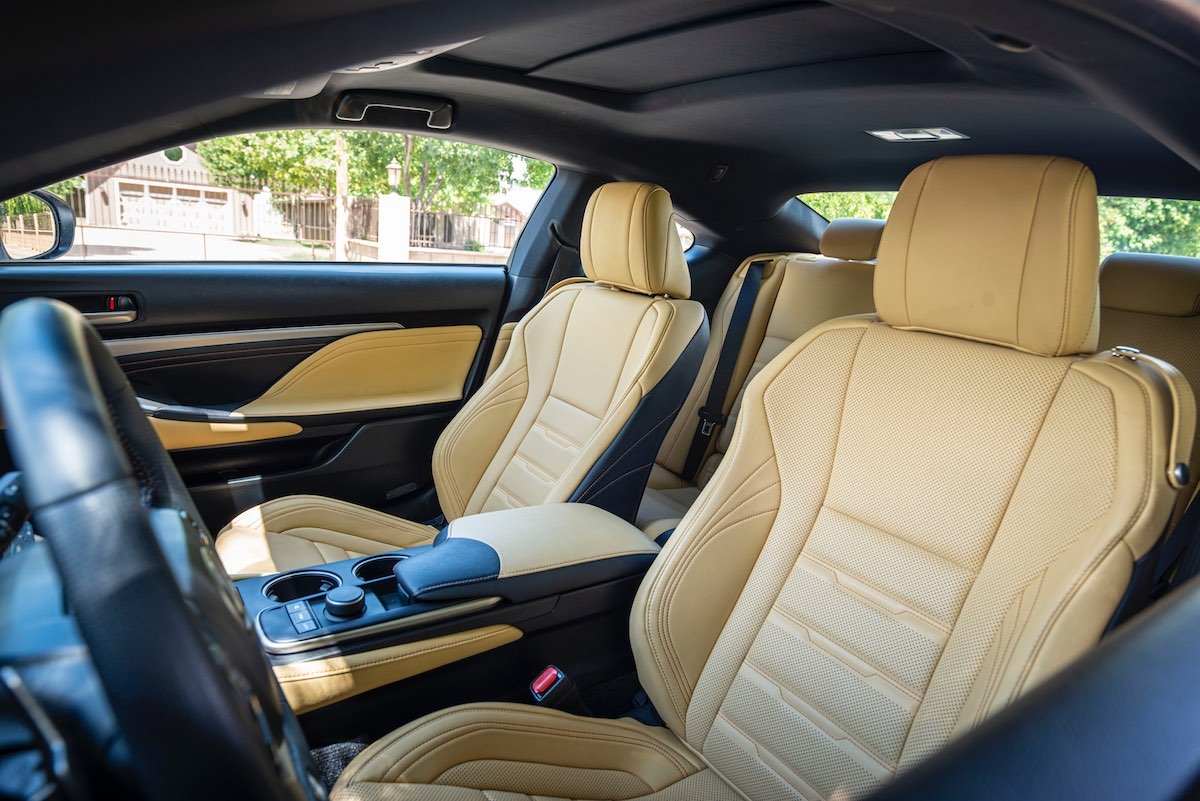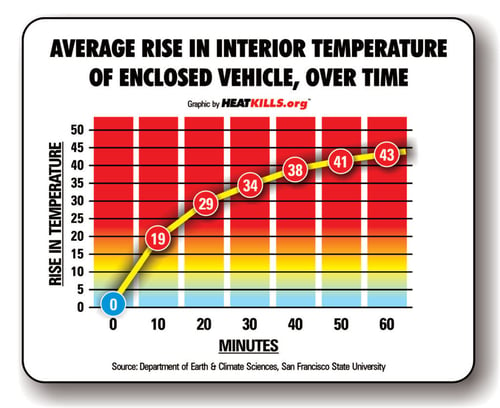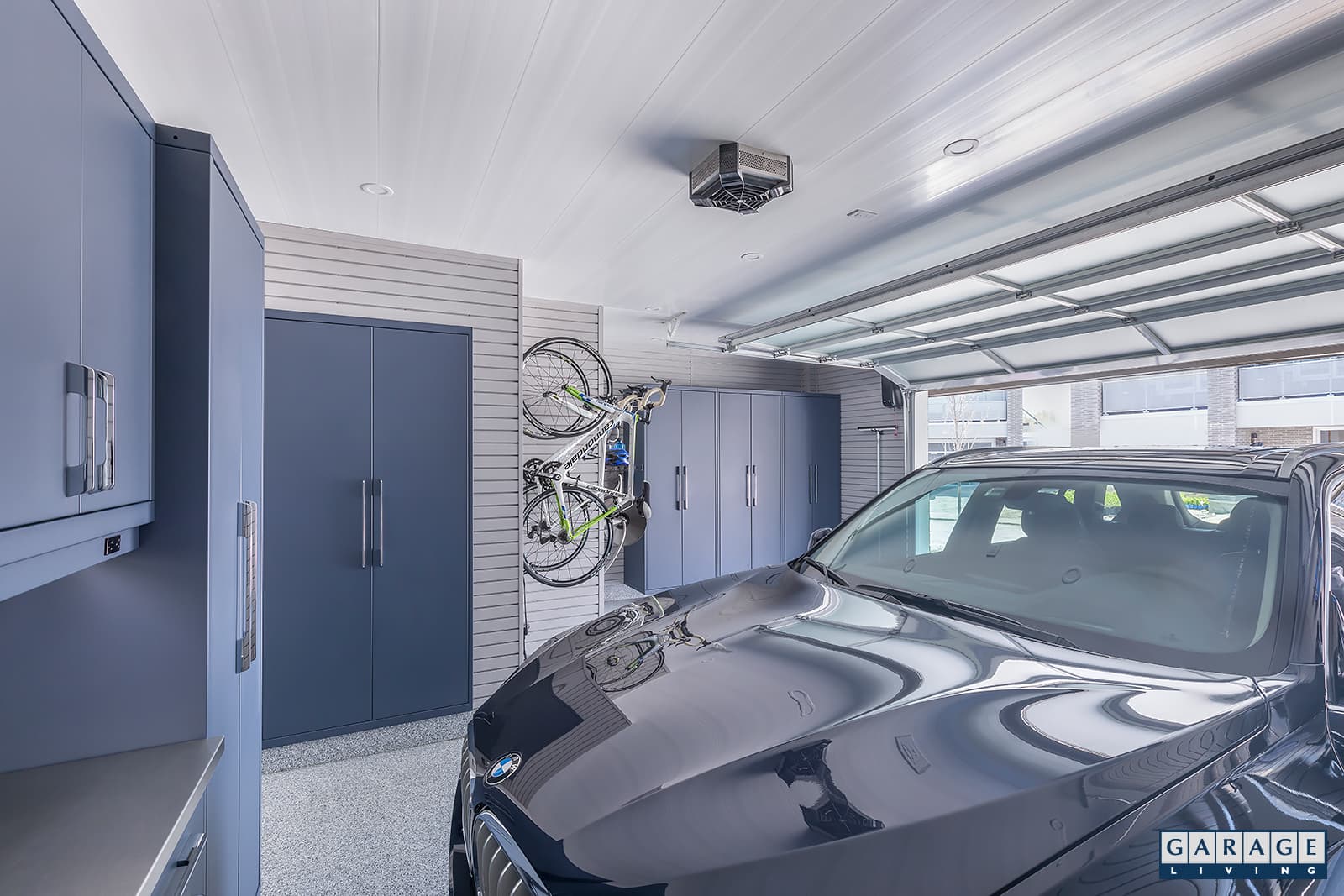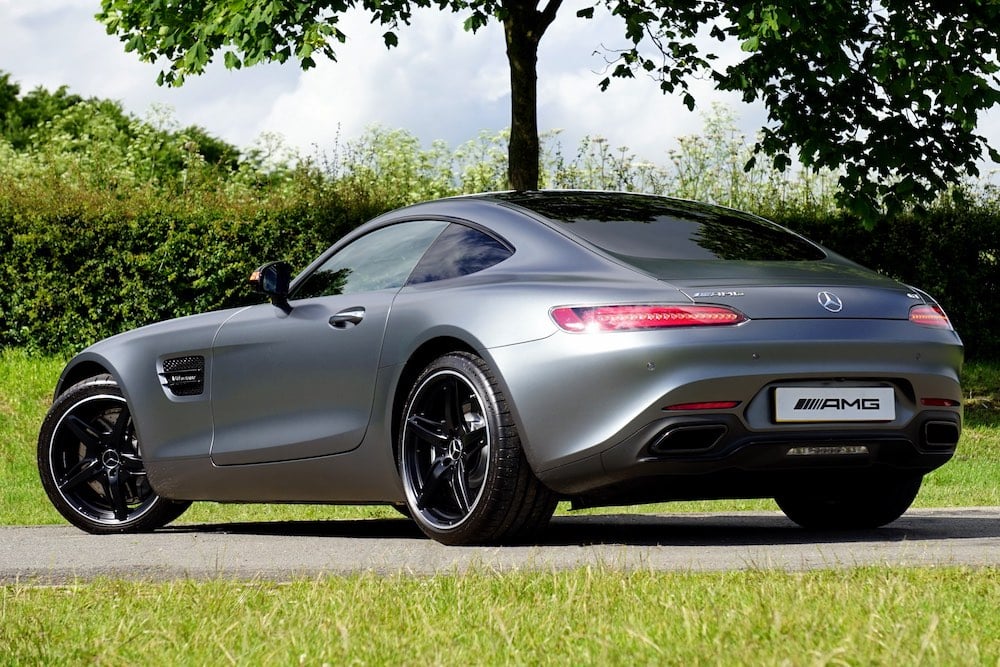Under the right circumstances (or wrong circumstances, as the case may be), even the highest-end cars aren’t immune to the misery of a stiflingly hot interior.
When it’s a scorcher outside, entering a vehicle that’s been parked directly in the sun for hours is never a pleasant experience.
Who wants to be greeted by a sweltering car interior that’s filled with a bunch of mini hazards? We’re talking about things like scalding seatbelt buckles, sizzling leather seats, and a dashboard, steering wheel, and gear shift that are uncomfortably hot to touch.
Keep reading to find out why a vehicle’s cabin gets so hot and what you can do to keep your parked car cool this summer.

Blame your hot car on “the greenhouse effect”
So why does the interior of a vehicle that’s parked in the sun feel so much warmer than it feels outdoors on a hot, sunny day?
You can blame it on “the greenhouse effect”.
You’ve probably heard of the the greenhouse effect in relation to how the Earth’s atmosphere traps heat, which enables our planet to sustain life.
The greenhouse effect is also why a car or truck feels like an oven on a hot day. The sun’s heat enters a vehicle through the windows and gets trapped inside, increasing the temperature.
The temperature increase is highest in the first 15-30 minutes after a car is left parked in the sun. The objects in a car’s interior such as seats, carpeting, and the dashboard also absorb some of that heat.
A Stanford University study found that on a sunny day with temperatures ranging from 72°F to 96°F (22°C to 35°C), the temperature was an average of 40°F higher (8°C) inside the cars they tested than it was outdoors.
7 ways to keep your parked car cool
Hot cars aren’t merely uncomfortable, they’re also unsafe.
It’s an unfortunately reality that negligent parents occasionally leave their kids alone in a hot car, with sometimes fatal results. Pets being left in hot vehicles is another issue we hear about all too often.
HeatKills.org is an organization dedicated to raising awareness about the dangers of leaving kids and pets in hot vehicles. Their graphic below illustrates how quickly a vehicle’s interior can heat up.

It’s not difficult to follow a few simple tips to keep your parked car cool (or at least cooler), even when it’s intensely hot outside.
1. Park smart when away from home
On a day when it’s unbearably hot and there’s nary a cloud in the sky, finding relief from the heat with some shade when parking will make your car much more comfortable to return to.
Ideally, you’d want to find a parking garage. If that’s not an option, parking beneath some trees on the edge of a parking lot or in the shade of a building can keep your car cooler and be worth the extra walking that’s required.
Keep in mind that parking in a more secluded area of a parking lot may not be advisable if the neighborhood isn’t the safest, especially if you’re returning to your vehicle after dark.
Also take into account where you’re parking, the time of day, and when you’ll be returning to your car. Just because you’re parking in shade at 11 a.m. doesn’t mean you’ll still be parked in shade at 3 p.m.
2. Park in your home garage
Giving a tip to use a home garage as a way to keep your parked car cool may make you think “Thanks, Captain Obvious”.
But are you always able to park in your garage? And have you noticed how many of your friends and neighbors park full-time in their driveways?
Your garage’s main purpose is for parking, but a lot of homeowners don’t (or can’t) use it for that function. Consider these statistics:
- A home organization study done by Moen found that the garage was the most cluttered space in homes.
- 20% of the 1,500 people who responded to a Garage Living poll said they were unable to park in their garage.
- A third of homeowners with 2-car garages are only able to park one of their cars in it because of clutter. (U.S. Dept. of Energy study)
When you’re home, nothing beats garage parking as the best way to keep your parked car cool. Even if you come home and plan to go out in an hour or two, parking in the garage is smarter that staying parked in the sun in your driveway.
Aside from staying cooler, there are plenty of other big benefits to making space in your garage for parking.
The risk of vehicle theft or burglary is significantly reduced and your vehicles will be protected from the exterior elements that can shorten their life. Parking closer to your home’s entrance (via the interior garage access door) is also more convenient.

Simply parking in your home garage is an obvious solution for keeping your car cool, but something many homeowners are unable to do.
3. Use a windshield sun shade
Despite the fact that they do help keep a car’s temperature down by blocking the primary entry point for the sun, some drivers simply hate the look of those windshield sun shades. The hassle of using them is a turn-off for some people as well.
Most sun shades you see in parked cars flatten out with an accordion-style design and admittedly look rather unattractive. Their foil-like, reflective covering doesn’t exactly help them call less attention to themselves, either.
It’s completely understandable that you might not want your luxury vehicle’s sharp looks being spoiled by a cheaper-looking sun shade (or something like this laughably tacky Golden Girls sun shade).
There are more expensive, but much nicer-looking windshield sun shades out there that can help to keep your parked car cool. Some companies even offer hundreds of custom models that allow for a perfect fit and vehicle color match.
Higher quality sun windshield shade models also tout better heat-absorbing materials. This makes them more effective at reducing the entrance of thermal and ultraviolet rays into a car’s cabin.
4. Cover up your vehicle interior
If a windshield sun shade is a total non-starter for you as a car cooling option, covering up the parts of your vehicle’s interior that get the hottest is another way to go.
There are plenty of models of car dashboard covers to choose from. Like the windshield sun shades, shop around for a higher quality product that provides a good fit and effectively complements your car’s interior décor.
Your steering wheel and leather seats (especially darker colored seats) are the other interior parts you’ll want to cover up to prevent them from baking in the sun. If you’re wearing shorts or a dress, your bare legs will thank you.
If you have dark leather seats, it might even be worth using lighter colored fabric seat covers during the hottest months of the year.
For a less elegant method of covering your parked car’s interior parts, even using a blanket or two will help (make sure to use a lighter colored blanket).
5. Tint your car windows
In most cases, window tints are effective at helping to keep a parked car cool.
Better quality tints are designed to allow for a good amount of light to pass through the tinted window, while blocking out the sun’s thermal rays. The latter is sometimes referred to as the “high heat rejection rate” of the tint.
Good window tints also cut down on the sun’s harmful UV rays.
Now here’s where car window tints can get very tricky – there are widely varying laws in the U.S. and Canada for how they can be used.
Some states and provinces don’t allow any tint to be on a windshield, such as Illinois and Alberta. Other have a requirement that tints allow a minimum of 70% of the sun’s light through the windows.
It gets even more complicated if you’re driving outside of your state or province. What’s legal with your window tint where you live may very well get you a ticket when you’re away travelling.
The American Automobile Association has a handy resource that provides a state-by-state and province-by-province breakdown of vehicle tinting regulations.
6. Crack the windows…or not
A lot of drivers still swear by the old practice of leaving a car’s side windows or sunroof open a crack to keep their vehicle’s interior temperature down.
This does let the built-up heat escape and helps to facilitate some airflow through the car’s cabin, but only a fairly modest amount.
You have to ask yourself, however – is the meager reward of a car interior that’s just a few degrees cooler worth the risk of leaving your car more vulnerable to theft or vandalism?
If you leave your car windows or sunroof open even just an inch, a skillful car thief could potentially get inside the vehicle. ABC News reports that for one thief “a car with a window cracked opened was an unlocked car”.
If you’re willing to risk cracking your windows, once again be conscious of your surrounding area. Park in visible areas close to other vehicles, ideally where there’s a decent amount of vehicle and foot traffic. Parking in view of a surveillance camera also doesn’t hurt.
And let’s not forget the other hazard of leaving your windows slightly open – the risk of a sudden rainstorm making a mess of your car’s interior.
7. Try a solar-powered ventilation fan
The last of our car cooling tips is to try a solar-powered ventilation fan, which you may not be familiar with.
The fan attaches to the outside top of one of your rolled-up window and has an outward facing solar panel that powers it. The fan blows out the hot air from inside the car, while pulling in the relatively cooler air outside the car.
Using two fans set up on the two side front or rear windows should increase the cross-ventilation airflow and decrease the temperature even more.
Higher-powered, more effective models can be purchased that have a larger solar panel that sits on your dashboard and powers the fans.
The quality and reliability of this product seems to vary widely. Some online reviews dismiss cheaper models as too gimmicky and not very effective. Consumers who left reviews for other fan models praise them as ingenious and highly effective.
When all else fails…
Using one of these car cooling methods or, even better, a combination of them will keep a parked car cooler.
But if they’re still not cooling to your satisfaction, there are a couple of other ways to get the heat out of a parked car faster.
If you don’t mind getting some strange looks from passersby, one simple method involves fanning your car door to push out the heat.
Just fully roll down the passenger side window and fan the driver side door about 6-8 times. It might sound primitive, but it’s simple physics and it works!
Start parking in your garage once again
Follow these simple tips and you’ll be able to keep your parked car cooler and more comfortable to drive.
We can help you to transform your garage into a much more attractive area of your home that makes better use of your space for storage. That means you can use it for keeping your vehicles cooler and safer.
Schedule a free design consultation with Garage Living to start getting a lot more out of your garage space.
Please share this post if you found it useful.
